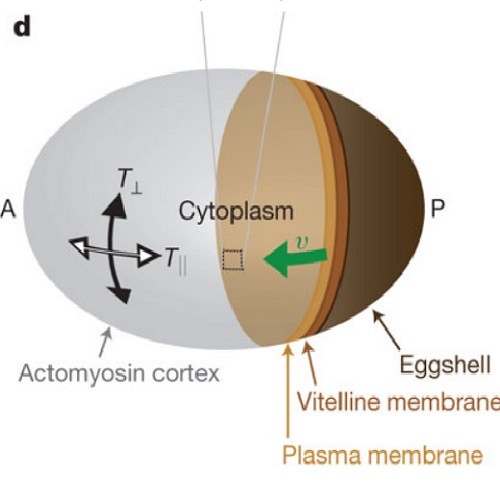Anisotropies in cortical tension reveal the physical basis of polarizing cortical flows.
Asymmetric cell divisions are essential for the development of multicellular organisms. To proceed, they require an initially symmetric cell to polarize. In Caenorhabditis elegans zygotes, anteroposterior polarization is facilitated by a large-scale flow of the actomyosin cortex, which directs the asymmetry of the first mitotic division. Cortical flows appear in many contexts of development, but their underlying forces and physical principles remain poorly understood. How actomyosin contractility and cortical tension interact to generate large-scale flow is unclear. Here we report on the subcellular distribution of cortical tension in the polarizing C. elegans zygote, which we determined using position- and direction-sensitive laser ablation. We demonstrate that cortical flow is associated with anisotropies in cortical tension and is not driven by gradients in cortical tension, which contradicts previous proposals. These experiments, in conjunction with a theoretical description of active cortical mechanics, identify two prerequisites for large-scale cortical flow: a gradient in actomyosin contractility to drive flow and a sufficiently large viscosity of the cortex to allow flow to be long-ranged. We thus reveal the physical requirements of large-scale intracellular cortical flow that ensure the efficient polarization of the C. elegans zygote.

- Nature 2010 Sep 30;467(7315):617-21
- 2010
- Biophysics
- 20852613
- PubMed
Enabled by:
